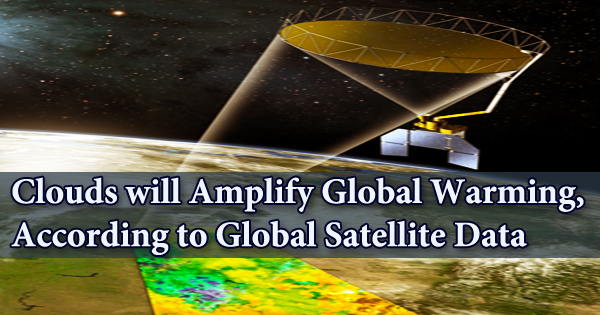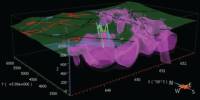Clouds are extremely likely to exacerbate global warming, according to a new technique of analyzing satellite data of Earth’s cloud cover. Scientists from Imperial College London and the University of East Anglia conducted the study, which provides the best evidence yet that clouds would increase global warming over time, aggravating climate change.
The findings, which were published today in the Proceedings of the National Academy of Sciences, also show that at twice atmospheric CO2 concentrations over pre-industrial levels, the climate is unlikely to warm below 2°C, and is more likely to rise more than 3°C on average.
CO2 levels were approximately 280 ppm (parts per million) before the industrial revolution, but they are now reaching 420 ppm, and may quadruple by mid-century if major emissions reductions are not achieved. The ‘climate sensitivity,’ a measure of how strongly our climate will respond to such a shift, is the amount of climatic warming anticipated from a doubling of pre-industrial CO2 levels.
Global warming is the long-term warming of Earth’s climate system that has been seen from the pre-industrial period (between 1850 and 1900) as a result of human activity, particularly fossil fuel combustion, which raises heat-trapping greenhouse gas levels in the atmosphere. The terms are commonly used interchangeably, however, the latter refers to both human and natural-caused warming, as well as the consequences for our world.

The average rise in Earth’s global surface temperature is the most used metric. The effect of clouds, and how they may change in the future, is the biggest source of uncertainty in climate sensitivity forecasts. This is because clouds may either accelerate or decrease warming depending on features such as density and altitude in the atmosphere.
Co-author Dr Paulo Ceppi, from the Grantham Institute Climate Change and the Environment at Imperial, said:
“The value of the climate sensitivity is highly uncertain, and this translates into uncertainty in future global warming projections and in the remaining ‘carbon budget’ how much we can emit before we reach common targets of 1.5°C or 2°C of global warming.”
“As a result, it’s important to better understand how clouds will impact future global warming. Our findings will increase our confidence in climate forecasts and allow us to better understand the severity of future climate change. This should assist us in recognizing our boundaries and taking steps to stay inside them.”
Human activities, notably fossil fuel burning, have increased heat-trapping greenhouse gas levels in Earth’s atmosphere, elevating Earth’s average surface temperature, as shown in changes in the climate from the early twentieth century. Global warming is the term used to describe the temperature rises caused by humans.
Low clouds have a cooling effect by blocking the sun’s rays from reaching the earth. High clouds, on the other hand, cause warmth because, although allowing solar energy to reach the ground, the energy radiated back by the Earth is different. The clouds can trap this energy, amplifying the greenhouse effect. As a result, the kind and amount of cloud produced by a warming globe has an influence on future warming potential.
To monitor and analyze past, current, and future climate change, scientists employ data from the ground, air, and space, as well as theoretical models. Global land and ocean temperature increases; rising sea levels; ice loss at Earth’s poles and in mountain glaciers; frequency and severity changes in extreme weather such as hurricanes, heatwaves, wildfires, droughts, floods, and precipitation; and cloud and vegetation cover changes, to name a few, are all evidence of climate change key indicators.
The researchers devised a new technique to quantify connections between state-of-the-art global satellite measurements of clouds and the related temperature, humidity, and wind conditions, which was inspired by concepts from the artificial intelligence field. They were then able to further limit how clouds would evolve as the Earth warms based on these observed correlations.
They discovered that clouds will accelerate global warming by reflecting less solar energy and boosting the greenhouse effect, with a 97.5 percent likelihood. These findings also imply that doubling CO2 emissions will result in a 3.2°C increase in global warming. This study has the highest level of confidence of any study to date, and it is based on data from worldwide observations rather than data from specific locations or cloud kinds.
Co-author Dr. Peer Nowack, from the School of Environmental Sciences and Climatic Research Unit at the University of East Anglia and Imperial’s Grantham Institute and Data Science Institute, said:
“Over the last few years, there’s been a growing amount of evidence that clouds probably have an amplifying effect on global warming. However, our new approach allowed us for the first time to derive a global value for this feedback effect using only the highest quality satellite data as our preferred line of evidence.”
“Our study takes a significant step toward reducing the most significant source of uncertainty in climate sensitivity estimates. As a result, our research points to a new direction in which machine learning approaches might aid in constraining the fundamental remaining uncertainties in climate science.”
















